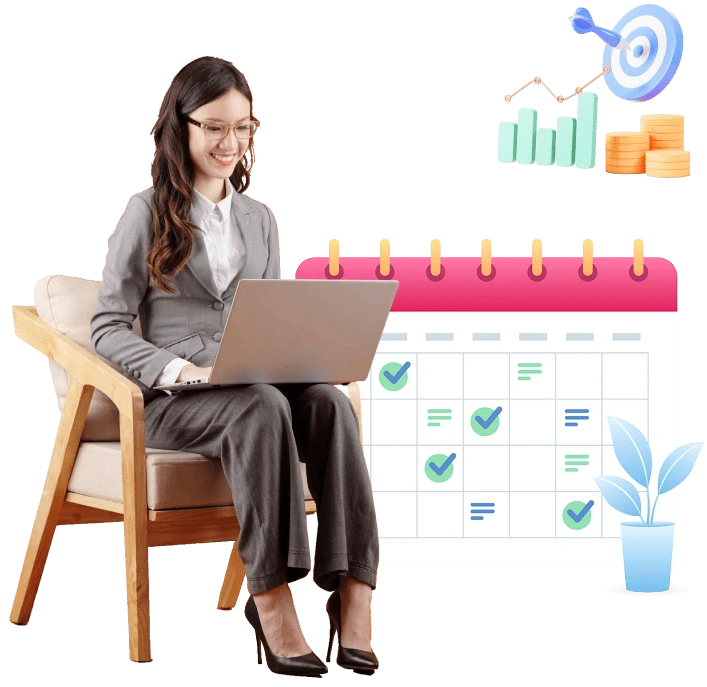Introduction :-
Did you know that more than 1,000,000 practitioners and 20,000 enterprises trust the Scaled Agile Framework (SAFe)? Moreover, Gartner has also named SAFe the most considered and adopted framework to scale Agile. This means there is a good scope for professionals who want to pursue a career in this field. Becoming a SAFe® product owner is the best way to embark. But you must be well-versed in all the basic and advanced elements of SAFe to become a proficient professional in this field. Let us know more about this detailed process below.
Definition of SAFe® Product Owner
A SAFe® Product Owner is one of the most important members of a SAFe Team. The professional works with the product management team, including other product owners. SAFe owners further work with stakeholders to define and list out stories in the Team Backlog.
The Product Owner will also order these stories based on the order of priority after they are listed out. The professional can further support multiple Agile teams at the same time. The SAFe® Product Owner role involves working specifically with the SAFe® Product Manager to maintain the particular vision of the product. That is why the key focus of a Product Owner is always on improving the product tactics.
You will find several types of Product Owners working in the same field. It includes the Scrum Product Owner, Portfolio Owner, Platform Owner, and Feature Owner.
Key Roles and Responsibilities of SAFe® Product Owner
Here is how Scaled Agile Framework has classified the roles and responsibilities of a SAFe® Product Owner:
Program Integration Planning
SAFe® Product Owners play a crucial role in the extended product management teams. They remain actively involved in refining the backlog and preparing for Program Increment Planning. Product Owners ensure the team backlog is up-to-date and contribute to the program vision, presentations, and roadmap before the planning event.
They define stories and provide clarifications for accurate story estimates during the event. They also identify team PI objectives for the upcoming program increment with the Agile team.
Execution of Iteration
SAFe® Product Owners handle various responsibilities during an iteration. They update the team backlog by gathering input from system engineers, architects, and other stakeholders. This involves developing, editing, and maintaining the team backlog. It also includes user stories, enablers, and defects.
Prioritization is based on factors such as time, user value, and team dependencies identified during PI planning. SAFe® Product Owners also review and reprioritize pending work during iteration planning. They further coordinate with other Product Owners and ensure alignment with the team on the closing iteration plan.
Under-the-Wire Story Detailing
During implementation, most backlog items are detailed in User Stories. Product Owners are responsible for the proper flow, even though any team member can write acceptance criteria and stories. They apply Behavior-Driven Development, collaborating with teams to create detailed stories, acceptance rules, and illustrations as acceptance tests.
Acceptance of Stories
Product Owners work closely with the team to ensure consensus on the completion of agreed-upon stories. This involves confirming that stories meet acceptance rules with predetermined compliance tests or align with the Definition of Done (DOD). It helps ensure a certain degree of quality and readiness for use.
Understanding Enabler Work
While not making technological decisions, Product Owners comprehend the horizon of upcoming enabler work. They collaborate with Solution/System Architects and Engineers to assist with decision-making and arranging crucial technological frameworks, achieved through capacity allocation.
Team Retrospective and Demo
SAFe® Product Owners actively engage with their teams during team retrospectives, demos, and Agile Release Trains Inspect and Adapt Workshops. They participate in improving processes and ensuring the effective presentation of Agile solutions to stakeholders.
Program Execution
In Program Execution, SAFe Product Owners are instrumental in producing system demos for value stream and program stakeholders. They associate dependencies with other Product Owners and actively participate in PO sync events, ensuring coordination within the organization.
Inspecting and Adapting
Teams address larger hindrances in Inspect and Adapt Workshops. SAFe® Product Owners work across teams, explaining and implementing improvement stories. Their active involvement increases the quality and velocity of the program. They play a key role in Program Increment System demonstrations, ensuring the display of crucial solution angles to stakeholders and collaborating with other team members to prepare demonstrations for the PI System.
SAFe® Product Owner vs SAFe® Product Manager
Although the roles and responsibilities of a SAFe® Product Owner and a SAFe® Product Manager may sound the same, they have significant differences. Let us discuss them further in this comparison table.
Also, check:Role of Safe Product Owner
| Feature | SAFe® Product Owner | SAFe® Product Manager |
| Role Focus | Primarily responsible for managing the Team Backlog, which involves detailed planning and coordination at the team level. | Takes on a broader role, concentrating on defining features and owning the overall vision and roadmap for the product at the program level. |
| Number of Teams Supported | Typically supports, at most, two teams within the Agile Release Train (ART). | Works across multiple teams, collaborating with several SAFe Product Owners. Has an overarching view of the entire program, involving coordination and alignment. |
| Vision and Roadmap Ownership | Plays a contributing role in refining the vision and roadmap but has less authority compared to the SAFe Product Manager. | It plays a significant role in defining the features, owning the vision, and steering the roadmap. Exerts higher authority in decision-making for the product direction. |
| Decision-Making Authority | Does not have the final say on critical decisions for the product; the SAFe Product Manager is the ultimate authority. | Holds the final authority on what needs to be done for the product, making crucial decisions that guide the overall product strategy. |
| Collaboration with Teams | Collaborates closely with Agile teams, providing guidance on the backlog and clarifications during iterations. | Collaborates with Product Owners and cross-functional teams, aligning their efforts to achieve the overall program objectives. Involves strategic collaboration. |
| Scale of Influence | Focuses on a smaller scale within the Agile Release Train, addressing detailed team-level concerns. | Operates at a larger scale, influencing the program's strategic direction, aligning with organizational goals, and ensuring cohesion across multiple teams. |
| Overall Program View | Has a limited view focused on the team-level details within the Agile Release Train. | Possesses a comprehensive view of the entire program, facilitating coordination and alignment of various teams toward common program goals. |
| Responsibility for Features | Typically responsible for refining and detailing features at the team level based on the overall program vision. | Takes a lead role in defining and prioritizing features at the program level, ensuring alignment with organizational strategies and goals. |
| Stakeholder Collaboration | Collaborates with stakeholders primarily at the team and ART levels. | Engages with stakeholders across the program, representing the product at a higher level, and addressing strategic concerns. |
Learn More about SAFe Product Manager vs Product Owner
How to Become a SAFe® Product Owner?
The very idea of becoming a SAFe® Product Owner may excite you already but the road towards success is not that easy. You need to fulfill some prerequisites to become such an experienced professional. Here’s how:
Understand Agile and SAFe Principles
To embark on the journey of becoming a SAFe® Product Owner, start by developing a strong understanding of Agile manifesto principles. Familiarize yourself with the core concepts of the SAFe framework, emphasizing its principles, roles, and practices.
Acquire Relevant Experience
Gain practical experience within an Agile environment. Consider working as a Scrum Team member or in a related role to build a foundation in Agile practices. Exposure to product development and delivery processes will provide valuable context.
Participate in SAFe® Training
Enroll in a SAFe® Product Owner/Product Manager (POPM) training course offered by a SAFe® Training Partner. These courses equip you with the skills and expertise to prepare you for the SAFe® Product Owner role.
Attend SAFe® Events
Actively participate in SAFe events and forums to connect with other SAFe practitioners. Attend SAFe Community of Practice meetings and conferences to stay updated on industry best practices and network with professionals.
Engage in Practical Applications
Apply your theoretical knowledge in practical scenarios. Engage in projects where you can actively contribute to refining backlogs, prioritizing features, and ensuring alignment with the program's overall vision. Collaborate with Agile teams and stakeholders to gain hands-on experience.
Read SAFe® Documentation
Deepen your understanding of the SAFe framework by reading essential documentation such as the SAFe® Big Picture, SAFe® Principles, and other relevant materials. This will provide you with a comprehensive overview of the framework's key components.
Prepare for Certification
Review the SAFe® POPM exam study guide provided by Scaled Agile, Inc. Take advantage of practice exams to assess your readiness for the SAFe® Product Owner/Product Manager (POPM) certification exam. This preparation will boost your confidence for the certification process.
Obtain SAFe® Product Owner Certification
Schedule and successfully complete the SAFe® POPM certification exam through the Scaled Agile website or an authorized exam provider. Attaining this certification demonstrates your proficiency as a SAFe® Product Owner.
Continue Learning and Improvement
Keep yourself up-to-date on the most recent advancements and changes within the SAFe® framework. Participate in ongoing learning opportunities such as webinars, workshops, and other educational materials to remain at the forefront of industry trends.
Apply SAFe® Principles in Your Role
Transition into a SAFe® Product Owner role within your organization or seek opportunities where you can actively apply your newly acquired skills. Continuously remodel your approach based on feedback and hands-on experience, contributing to the success of Agile initiatives.
Also, CheckFAQs on SAFe® POPM Certification
Conclusion
By now, you already know that a SAFe® Product Owner is a critical component of Agile teams. This particular professional has a huge role in ensuring efficient product visions and deliveries. However, you must be well-versed in every aspect of the profession to become a professional SAFe® Product Owner. That is why you must pursue the SAFe Product Owner/Product Manager (SAFe POPM) Certification from Simpliaxis to ensure you do not miss out on any basics. So, why wait? Enroll now in the SimpliAxis SAFe® Product Owner Course and become a certified Product Owner in no time.






















